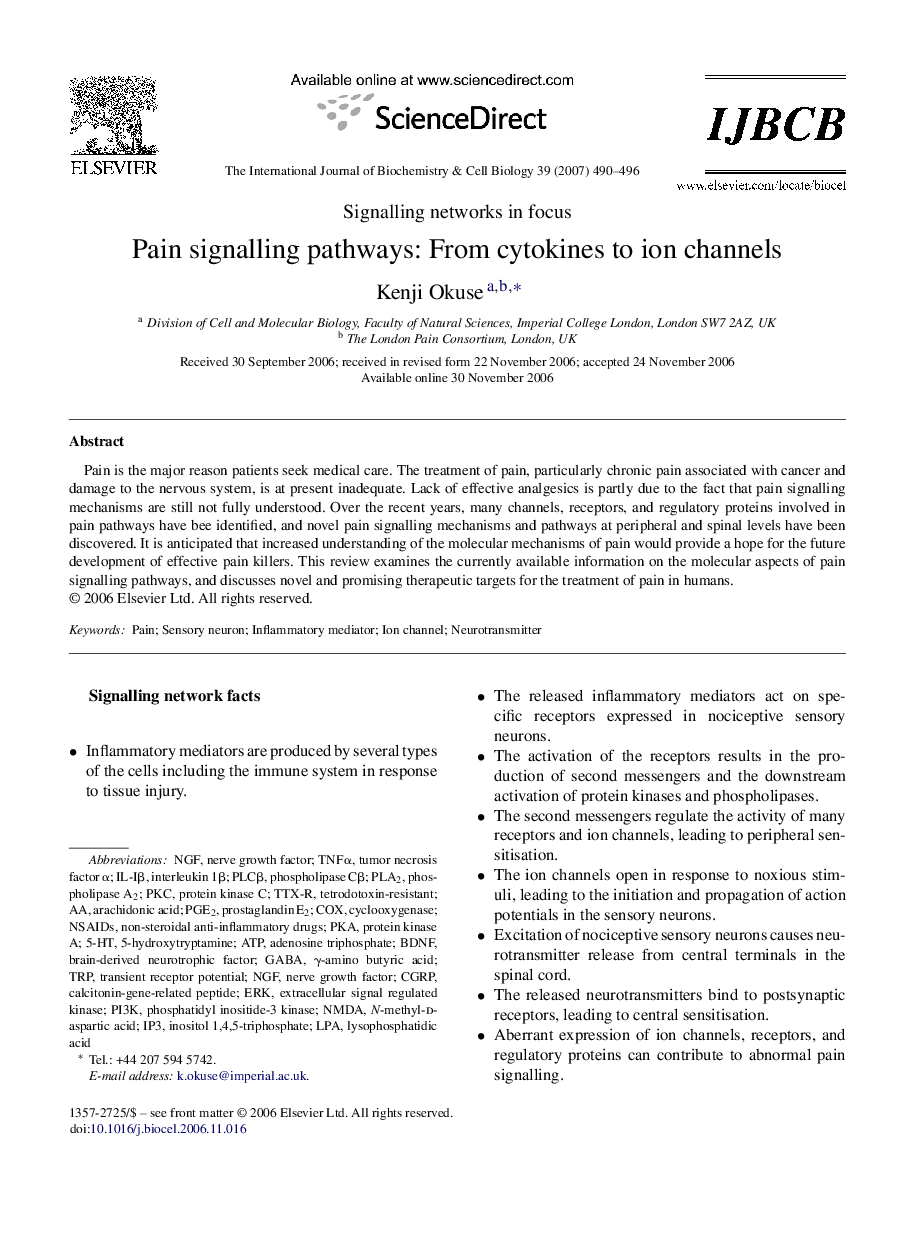| Article ID | Journal | Published Year | Pages | File Type |
|---|---|---|---|---|
| 8326537 | The International Journal of Biochemistry & Cell Biology | 2007 | 7 Pages |
Abstract
Pain is the major reason patients seek medical care. The treatment of pain, particularly chronic pain associated with cancer and damage to the nervous system, is at present inadequate. Lack of effective analgesics is partly due to the fact that pain signalling mechanisms are still not fully understood. Over the recent years, many channels, receptors, and regulatory proteins involved in pain pathways have bee identified, and novel pain signalling mechanisms and pathways at peripheral and spinal levels have been discovered. It is anticipated that increased understanding of the molecular mechanisms of pain would provide a hope for the future development of effective pain killers. This review examines the currently available information on the molecular aspects of pain signalling pathways, and discusses novel and promising therapeutic targets for the treatment of pain in humans.
Keywords
PI3KPLA2TTX-RLPAN-methyl-d-aspartic acidPKCNMDACGRPIP3NGFPLCβpKaPGE25-hydroxytryptamineERKNSAIDS5-HTTNFαCOXTrpBDNFInositol 1,4,5-triphosphateγ-amino butyric acidAdenosine TriphosphateATPcyclooxygenasephospholipase A2Arachidonic acidlysophosphatidic acidinterleukin 1βtumor necrosis factor αNon-steroidal anti-inflammatory drugsPainextracellular signal regulated kinasenerve growth factorBrain-derived neurotrophic factorPhospholipase CβTetrodotoxin-resistantSensory NeuronInflammatory mediatortransient receptor potentialprotein kinase AProtein kinase CProstaglandin E2calcitonin-gene-related peptideNeurotransmitterIon channelGABA
Related Topics
Life Sciences
Biochemistry, Genetics and Molecular Biology
Biochemistry
Authors
Kenji Okuse,
